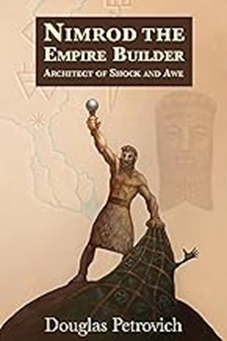Discipleship Lesson-11
LESSON-11 DISCIPLESHIP
Genesis 10 The Battle for Originality… (Nimrod)… Archetypes of rebellion vs. redeemed leadership
Genesis 10 introduces Nimrod not just as a historical figure, but as a spiritual archetype—a prototype of rebellion, counterfeit strength, and self-made leadership.
When you frame this as “The Battle for Originality,” you’re tapping into a deep tension: will men lead from Spirit-led sonship or from self-exalting ambition?
Let’s break it down.
Genesis 10: The Rise of Nimrod
•Mighty hunter before the Lord” is often interpreted ironically—Nimrod wasn’t honoring God, he was positioning himself in defiance of Him.
•He founded cities like Babel, Erech, and Akkad—early centers of empire, control, and human ambition.
•His name is linked to rebellion—some scholars suggest it means “let us rebel”.
Insight: Nimrod represents the counterfeit masculine archetype—strong but disconnected, ambitious but unanchored, influential but spiritually bankrupt.
The Battle for Originality
This is the tension every man faces:
•Will I build Babel or the Kingdom of God?
•Will I lead from ego or from Gods Spirit?
•Will I rebel to be seen—or be redeemed to serve?
Part 2 Nimrod The Rebel
🔥 Nimrod is one of the most enigmatic and provocative figures in early biblical history—briefly mentioned, yet symbolically loaded. His story appears primarily in Genesis 10:8–12, with echoes in 1 Chronicles 1:10 and Micah 5:6.
Though only a few verses speak of him directly, his legacy has stirred centuries of theological, historical, and mythological speculation.
🧬 Biblical Identity
• Lineage: Son of Cush, grandson of Ham, great-grandson of Noah.
• Title: Called a “mighty hunter before the Lord”, which some scholars interpret as “in defiance of the Lord” due to the Hebrew phrasing.
• Kingdom Builder: Credited with founding major cities in Shinar (Mesopotamia)—including Babylon, Uruk, Akkad, and Calneh.
• Expansion: Possibly associated with the building of Nineveh, Rehoboth Ir, Calah, and Resen—though the text is ambiguous about whether Nimrod or Ashur built these.
🏗️ Symbol of Rebellion
• His name may derive from the Semitic root marad, meaning “to rebel”.
• Jewish and Christian traditions often link Nimrod to the Tower of Babel, portraying him as a tyrant who sought to challenge God’s authority.
• In Micah 5:6, Assyria is referred to as “the land of Nimrod,” suggesting his legacy endured as a symbol of imperial power and opposition to God.
Cultural and Theological Interpretations
• Jewish Midrash and other ancient sources depict Nimrod as a prototype of oppressive kingship—one who weaponized strength and centralized power.
• Some scholars have tried to link him to historical rulers like Naram-Sin of Akkad or the god Ninurta, though no definitive historical match exists.
• In theological terms, Nimrod often represents the archetype of rebellion, empire-building, and self-exaltation—contrasted with the humility and obedience God desires.
For Your Ministry, Nimrod is a rich archetype for exploring masculine distortion—power without submission, ambition without Spirit, leadership without covenant. He’s the anti-son, the self-made man who builds cities but loses his soul. Y
Curriculum Books to Read: @ amazom.com/Download Nimrod the Empire Builder: Architect of Shock and Awe by Douglas Petrovich | Nov 8, 2023
